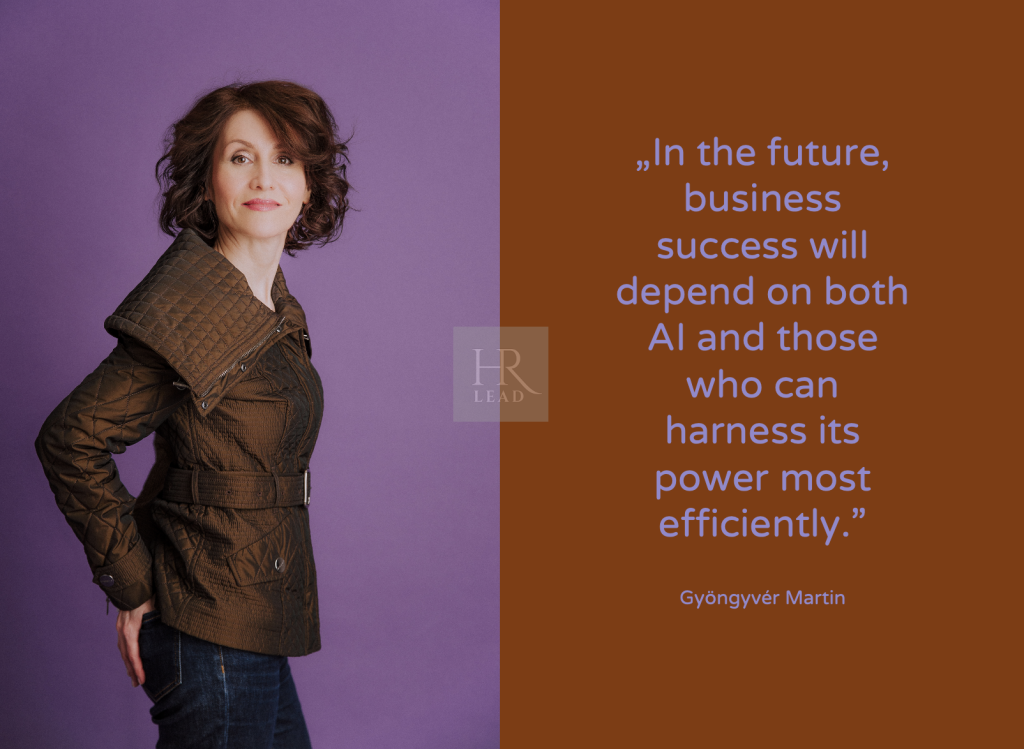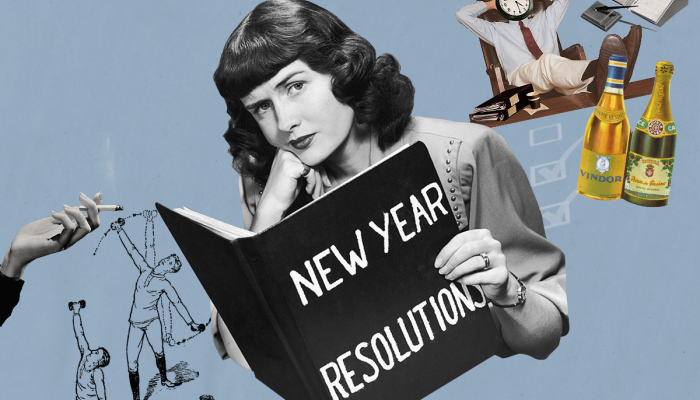The HR function plays a critical role in successfully implementing AI in business because integrating AI-based systems and technologies requires not only technological changes but also essential cultural and organizational changes.
Let’s embark on a journey to uncover the pivotal role of HR in driving AI adoption for businesses. Discover how an innovative HR AI strategy can seamlessly align with your business’s AI strategy, gain insights into the essential Dos and Donts of crafting and implementing a powerful AI HR strategy and uncover few successful AI implementation cases.

Clarity and focus
I don’t know about you, but there is now more noise around AI than clear and understandable content. It’s difficult to narrow down the essentials and, from there, define a clear AI strategy for HR function. As an HR leader, this topic naturally affects me, so I decided to go back to the basics and build my own approach from there.
An AI business strategy outlines how an organization utilizes artificial intelligence to accomplish its goals, enhance operations, and foster growth (e.g. improving efficiency, enhancing customer experience, automation of routine tasks, drive innovation).
I develop the HR AI strategy in alignment with my company’s overall business AI strategy. There are numerous key components in an AI HR strategy, so for the sake of simplicity, I select the most important ones:
Vision and objectives, Pain points and opportunities, Potential use cases for AI, Technology and infrastructure, Data management, Implementation plan, Change management plan, Monitoring & evaluation, Ethics and governance
In order to gain clarity and focus, I need to identify areas of concern (pain points) and potential opportunities. This requires collecting information from my HR team, the market, competitors, customers, stakeholders, networks, and data sources to pinpoint challenges and areas where AI can make a difference. HR AI tools can effectively address various issues. For your better understanding I provide a few successful AI implementation cases below.
You might ask me if using any HR AI tools without a business AI strategy is possible. My answer is ‘yes’, it is possible, but it comes with risks. Without a strategy, you may not have clear goals, know what success looks like, or how to measure it. The tool you have chosen may not fit well with existing processes, leading to inefficiencies. Employees may resist the change if they don’t see the clear benefits. It can lead to legal and ethical issues as you might overlook important considerations like data privacy and fairness. To summarize, it’s always better to have at least a basic strategy to guide the use of AI tools.
Dos and Donts
Here are some valuable tips for creating and implementing an HR AI strategy.
- Align your HR AI strategy with the overall business goals.
- Align AI initiatives with your HR goals, like improving recruitment efficiency or enhancing employee engagement.
- Engage stakeholder such as HR, IT, Business development, and top management from the beginning to ensure buy-in and collaboration.
- Involve HR professionals alongside AI specialists in the development process. HR expertise is critical to building human-centric AI solutions.
- Start with small pilot programs in your focus area. Test in controlled environments before scaling up across the organization.
- Use high-quality, unbiased data for training AI models to ensure accurate and fair outcomes.
- Implement guidelines to address ethical concerns and comply with regulations regarding data privacy and bias.
- Provide training for HR staff to understand and work effectively with AI tools.
- Continuously evaluate the performance of AI initiatives and make adjustments as needed.
Please avoid those mistakes by creating and implementing an HR AI strategy.
- Don’t over-promise. Be realistic about what generative AI can achieve. Manage expectations to avoid disappointment.
- Don’t ignore employee concerns. Communicate transparently about AI implementations to address fears and encourage acceptance.
- Don’t automate complex HR tasks unnecessarily. Avoid automating areas that demand human judgment and empathy (e.g. conflict mediation, leadership coaching).
- Don’t neglect data security. Ensure robust data security measures are in place to protect sensitive employee information.
- Don’t rush implementation. Don’t hastily adopt AI without thorough testing, employee training, and process integration. Rushed implementation can lead to errors and mistrust.
- Don’t overlook integration. Make sure AI solutions integrate seamlessly with existing HR systems and processes.
- Don’t over-rely on AI for decision-making. Avoid using AI as the sole decision-making tool in sensitive HR matters (e.g. hiring, promotions, or layoffs).
- Don’t underestimate change management. Proper change management, including communication and training, is critical to ensuring smooth integration of AI into HR processes.
- Don’t ignore legal and ethical risks. Don’t overlook ethical implications—build safeguards and conduct regular audits (e.g., biased hiring algorithms).
- Don’t disregard continuous monitoring: After deploying AI tools, don’t forget to regularly monitor and update the algorithms to avoid drifts or biases.
Successful AI implementations in HR function
As a closing remark, let me mention a few successful AI implementation cases in the HR field by category:
Recruitment & Hiring
- Unilever – AI in Recruitment: Unilever revamped its hiring process by integrating AI to screen resumes, assess candidates, and conduct digital interviews. Impact: This AI implementation cut the hiring process from four months to just four weeks, increased diversity, and enhanced candidate quality by focusing on behavioral traits rather than traditional resumes.
- PwC – Chatbots for Recruitment: PwC developed AI-powered chatbots to streamline recruitment, handle high volumes of applications, and improve candidate experience. Impact: The chatbot has reduced administrative tasks, improved the speed of the recruitment process, and enhanced the overall candidate experience by providing real-time communication.
- L’Oréal – AI in High-Volume Hiring: L’Oréal implemented AI to manage its large-scale recruitment efforts, especially in internship and graduate hiring. Impact: The AI-driven process reduced recruitment time by 70%, enabled scalable hiring across multiple regions, and ensured a consistent candidate experience globally.
- Johnson & Johnson – AI for Ethical Recruitment: Johnson & Johnson (J&J) uses AI to ensure an ethical and transparent recruitment process by reducing biases. Impact: This implementation helped increase diversity in hiring and promoted a more meritocratic and transparent process, with a significant reduction in unconscious biases.
- PepsiCo – Predictive AI for Talent Acquisition: PepsiCo integrated AI to help predict the success of new hires and improve the recruitment process. Impact: This has led to better hiring decisions, improved retention, and a more streamlined recruitment process, especially in high-turnover roles.
Talent Management
- IBM – Watson AI for Talent Management: IBM uses its own AI platform, Watson, to enhance talent management. Impact: Watson helps HR managers predict which employees are likely to leave, suggests learning and development plans, and provides insights into employee engagement, improving retention rates and employee satisfaction.
- KPMG – AI for Internal Mobility: KPMG developed an AI system to optimize internal mobility by matching employees with new roles based on their skills and career preferences. Impact: This has increased retention, encouraged continuous learning, and provided better career advancement opportunities for employees.
- Shell – AI for Talent Acquisition and Development: Shell uses AI to streamline its recruitment process and aid in employee development. Impact: The AI system helps Shell identify internal talent for future leadership roles, accelerates hiring decisions, and ensures better matches between job openings and candidate skills.
Employee engagement
- Vodafone – AI for Employee Engagement: Vodafone introduced AI-powered chatbots to enhance employee engagement and improve operational efficiency in HR tasks. Impact: TOBi (chatbot) has significantly reduced HR workloads by automating repetitive queries and tasks, freeing HR teams to focus on strategic initiatives, and improving response times for employee queries.
- SAP – AI for Employee Well-being: SAP uses AI to assess employee well-being and predict factors that could lead to burnout. Impact: By proactively identifying employees at risk of burnout, SAP can intervene with wellness programs, tailored support, and workload adjustments, significantly improving employee well-being and retention.
- Cisco – AI for Employee Experience: Cisco implemented AI to enhance the employee experience by automating HR services. Impact: The AI tools reduced the time spent on administrative HR tasks by over 20%, allowing employees to focus on more value-added activities while improving satisfaction with HR services.
- Nestlé – AI for Employee Retention: Nestlé uses AI to predict which employees are likely to leave the company and take action to retain them. Impact: By identifying employees at risk of leaving, Nestlé has improved retention rates through targeted interventions such as promotions, training, or mentorship programs.
- Mastercard – AI for Sentiment Analysis: Mastercard leverages AI for sentiment analysis to understand employee feedback and engagement. Impact: This provides real-time insights into employee morale and allows HR teams to address concerns before they escalate, improving employee satisfaction and reducing turnover.
HR Data Analytics
- Amazon – AI for Workforce Planning: Amazon uses AI for workforce planning, specifically in predicting staffing needs in its vast fulfillment centers. Impact: This enables Amazon to optimize staffing levels, reduce labor shortages during peak times, and improve overall operational efficiency.
- Walmart – AI for Employee Scheduling: Walmart implemented AI to optimize workforce scheduling and ensure the right staff levels across its stores. Impact: This has significantly reduced labor costs while improving employee satisfaction by providing more predictable and balanced work schedules.
- Deloitte – AI for HR Data Analytics: Deloitte uses AI and predictive analytics to manage its workforce more effectively, particularly in succession planning and talent retention. Impact: Deloitte can proactively identify talent at risk of leaving, develop retention strategies, and ensure a healthy talent pipeline for leadership roles.
- Coca-Cola – AI for Employee Insights: Coca-Cola uses AI to gather real-time insights into employee performance and engagement. Impact: This proactive approach allows Coca-Cola to identify potential issues early, helping them maintain a motivated workforce and align employee goals with company objectives.
- Adidas – AI for Predictive Workforce Analytics: Adidas utilizes AI for predictive workforce analytics to better plan and manage its global talent pool. Impact: With these predictive insights, Adidas can make informed decisions on hiring, talent development, and succession planning, ensuring a more agile and responsive workforce management strategy.
Learning and development
- AT&T – AI for Reskilling and Upskilling: AT&T uses AI to create personalized reskilling and upskilling paths for its employees as part of its broader workforce transformation initiative. Impact: This proactive approach has allowed AT&T to address skill gaps effectively, ensuring its workforce is future-ready and improving overall employee retention by fostering a culture of continuous learning.
- Spotify – AI for Organizational Culture Monitoring: Spotify uses AI to continuously monitor and assess organizational culture and employee sentiments. Impact: This data-driven insight enables Spotify to take timely actions to address cultural issues, improve workplace satisfaction, and maintain a positive work environment that supports innovation and creativity.
- Microsoft – AI for Adaptive Learning and Employee Development: Microsoft employs AI to deliver adaptive learning experiences that are tailored to each employee’s unique needs and career development goals. Impact: This approach ensures that employees receive customized learning opportunities that align with their career growth, boosting engagement and ensuring that Microsoft has a continually evolving talent pool.
- Siemens Healthineers – AI for Learning Recommendations: Siemens Healthineers integrates AI into its HR systems to offer personalized learning recommendations to employees. Impact: This AI-powered system ensures that employees are continually learning and growing, equipping them with the skills necessary for future job roles and fostering a culture of continuous development.
- Oracle – AI for Learning and Development: Oracle integrates AI into its HR solutions to provide personalized learning and career development. Impact: Employees receive tailored suggestions for training based on current skills and career goals, resulting in improved engagement and skill development, while Oracle benefits from having an agile and future-ready workforce.
Photo: határtalanKÉPzelet – Veres Anita Photography


